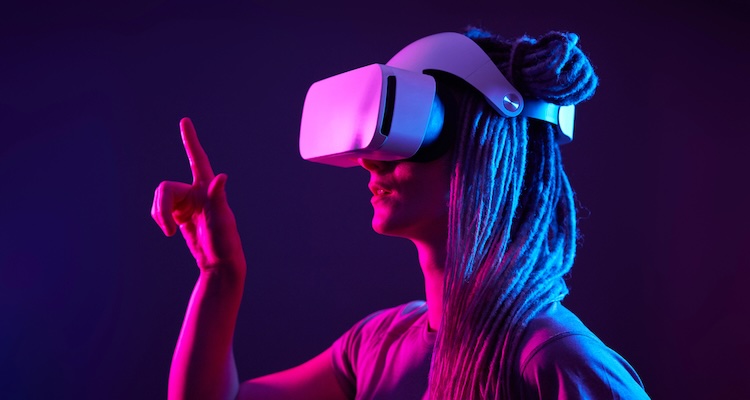Seeing Is Feeling: New Approach to Haptic Immersion May Transform Erotic VR Forever
The future of adult entertainment might be more psychological, less technological

From precisely directed streams of high-pressure air, hydrogel gloves lined with electrotactile pads, and what’s basically a full body version to directly stimulating our hands all the way to our brains, the researchers—not to mention the sextech industry—have been pursuing the holy grail of haptic virtual reality for decades.
But what if our minds are actually responsible for our experiences of lifelike touch?? Far-fetched, to be sure, but perhaps this undoubtedly enthralling concept might someday become a key part of haptic systems—and make our dreams of fully interactive, totally immersive adult VR movies and games a reality.
Touch me, touch me

Philosopher Laura Marks’ Touch: Sensuous Theory and Multisensory Media explores the concept of “haptic visuality,” suggesting that visual art, and possibly even the written word, can evoke tactile sensations in the viewer—or reader.
In an Instagram post, Miraal Habib, a “bio-mimicker” visual artist, pondered in an Instagram post, “What if we could simulate the feeling of touch without actually touching anything?” Habib was inspired by Marks’ theory during her own Master’s thesis work.
RECOMMENDED READ: With Sugar on Top: Tasty New VR Tech Flavors the Future
Habib’s project utilizes natural patterns and imagery as a more effective means of communicating important scientific information, because “Human beings have become attuned to understanding nature since the beginning of time.”
Feeling feelings I never felt

How does virtual reality, especially the explicit adult variety, fit into all of this? The answer could lie in producing content that, before the action begins, first firmly grounds the viewer in reality.
By this, I mean that most VR videos lean towards creating a fantasy, almost surreal experience; one where everything is polished, perfect, and the farthest thing from real life. Clothes mysteriously vanish, sexual activities pop in and out of existence, and linear time is nowhere to be seen—or experienced.
Then there’s the hardware, which, ironically, becomes heavier and increasingly cumbersome the higher the resolution, thus making them less immersive. Add VR motion sickness to this, and it’s understandable why it takes so long—if it happens at all—to get a feeling of actually being in a virtual environment.
It also explains why a large percentage of today’s sextech haptic accessories have a massively high hill to climb, the foothills of which are the less-than-arousing sensation of having one’s genitals inserted into a loudly whirling, clearly mechanical device.
I let my sensory nerve open

As mentioned, Marks’ concept of specifically crafting art capable of eliciting a touch-like experience might not solve all of VR’s haptic issues, but it might be a great place to start.
For instance, VR adult content could put as much work into crafting familiar environments as they currently do to create unreal ones, such as setting the stage by having the viewer enter via a door with squeaky hinges and stepping into a familiar-seeming room rather than an immersion-breaking set.
Next, how about adding a plethora of other grounding details, such as having a nice, plump, juicy apple offered up, then lusciously bitten into by our more fleshly, less plastic performer. Obviously we can’t taste it—at least not until haptic tech finally gets us there—but if Marks is right, it might help boost our sensual verisimilitude.
Likewise, everything should unfold in real time, with additional cues such as groaning bedsprings and floorboards, a squeaking floor, or a whooshing ceiling fan.
Companies must also make VR headsets lighter and more immersive until they’re as comfortable as regular eyeglasses.
Your heart is beatin’ next to mine

Again, all this won’t replace haptic tech’s fully immersive Holy Grail. However, these more realistic approaches to producing adult VR content may mean the winning hardware won’t have to work as hard as it otherwise would.
Think of it like that imposing hill I mentioned: we could either work harder and harder to make the lifeless feel lifelike, or take what might prove to be an exponentially more immersive shortcut by focusing on making what already looks realistic into where everything—and everyone—feels excitedly lifelike.
Image Sources: Depositphotos

















